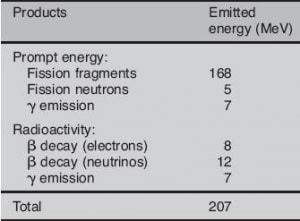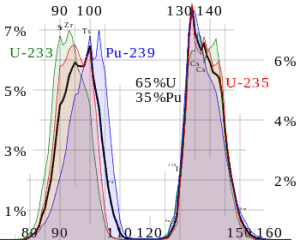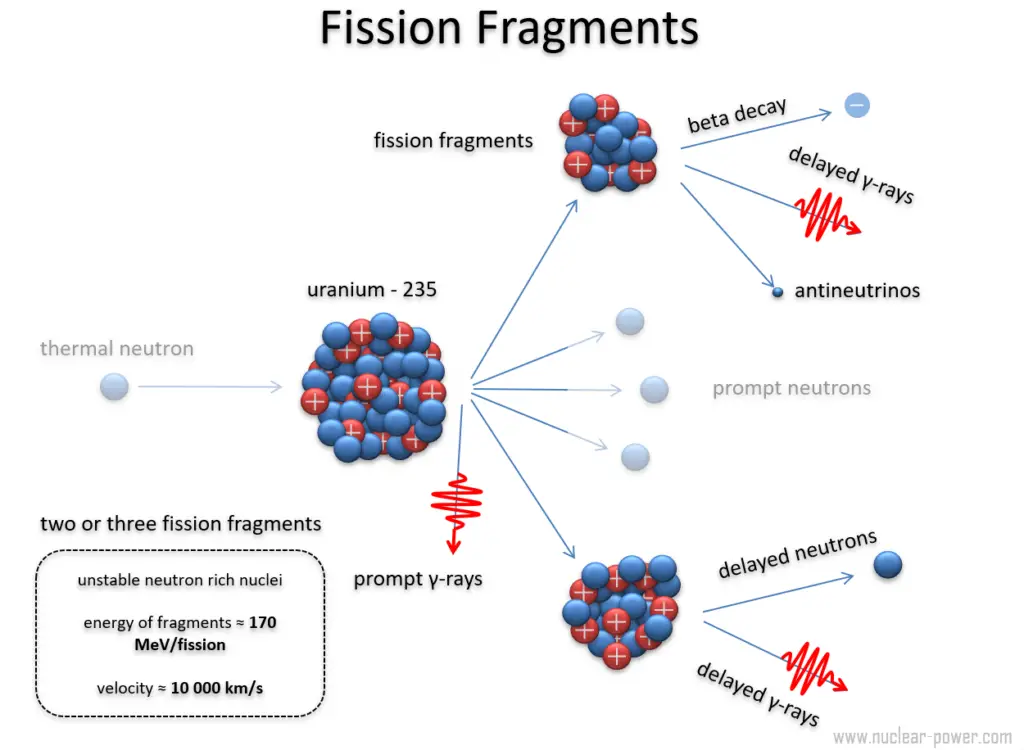The average of the fragment mass is about 118, but very few fragments near that average are found. It is much more probable to break up into unequal fragments, and the most probable fragment masses are around mass 95 (Krypton) and 137 (Barium).
Most of these fission fragments are highly unstable (radioactive) and undergo further radioactive decays to stabilize themselves. Fission fragments interact strongly with the surrounding atoms or molecules traveling at high speed, causing them to ionize.
The largest part of the energy produced during fission (about 80 % or about 170 MeV or about 27 picojoules) appears as kinetic energy of the fission fragments. The initial velocity of these fission fragments is of the order of 10 000 km per second. The fission fragments interact strongly (intensely) with the surrounding atoms or molecules traveling at high speed, causing them to ionize. The creation of ion pairs requires energy, which is lost from the kinetic energy of the charged fission fragment, causing it to decelerate. The positive ions and free electrons created by the passage of the charged fission fragment will then reunite, releasing energy in the form of heat (e.g.,, vibrational energy or rotational energy of atoms).
The range of these massive, highly charged particles in the fuel is of the order of micrometers so that the recoil energy is effectively deposited as heat at the point of fission.
See also: Interaction of Heavy Charged Particles with Matter


